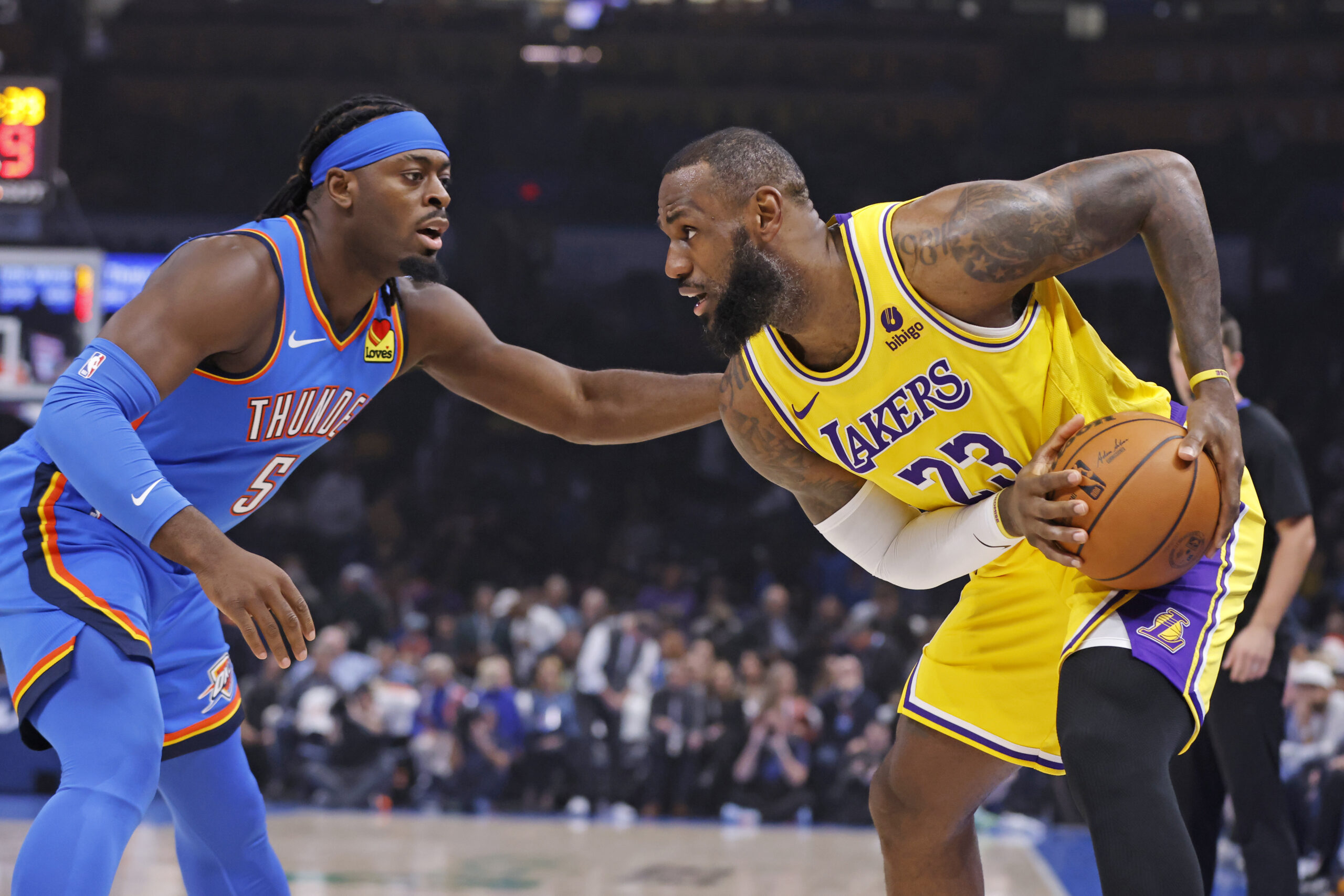LeBron James, who was drafted in 2003—before many of today’s players even began walking properly—has been in the NBA long enough to witness its whole transformation. The main distinctions are, of course, style and physicality, but shoes also play a role. And LeBron is well aware of the changes because of his experience.

Los Angeles Lakers forward LeBron James, right, holds the ball as Oklahoma City Thunder guard Luguentz Dort (5) defends during the first half of an NBA basketball game, Thursday, Nov. 30, 2023, in Oklahoma City. (AP Photo/Nate Billings)
James, a Nike athlete, will receive the LeBron 23, his most current shoe line, which he discussed in a recent interview with GQ. The company created it just to “honor the forever King,” who will play in his 23rd NBA season at the age of 40 in a few weeks.
Although the present basketball era was taken into consideration when designing the LeBron 23s, it is impossible to ignore how much footwear has evolved.
LeBron James talks about football 20 years ago
Ironically, during the alleged “physicality peak” of the NBA in the 1980s, players wore Converse All-Stars, which offered very little protection. After that, the game got softer and more technical, and the shoes evolved with it. Players today require protection, comfort, and speed all at once.
The legendary Los Angeles Lakers player stated: “Twenty years ago, there was a lot more physicality. The game was a lot slower. If you remember, shoes were a lot heavier as well,”
“You know, now it’s way more up-tempo. The game is faster. Possessions are quicker. So you want to try, as you get a little bit older, to get a little bit lighter. And with technology, we’ve been able to do that,”
“So with the outsole, the midsole, the lockdown suspension—we have to lock the shoe in to where I can be on the floor, running at the pace that I run, jumping the way I jump, and still feel protected at whatever position I’m playing.”
When it comes to basketball shoes, players had few alternatives in the past. Although there were brands like Adidas, Converse, Reebok, and Nike, there wasn’t much customization available, and the technology wasn’t developed enough to handle the rapidly evolving game.





